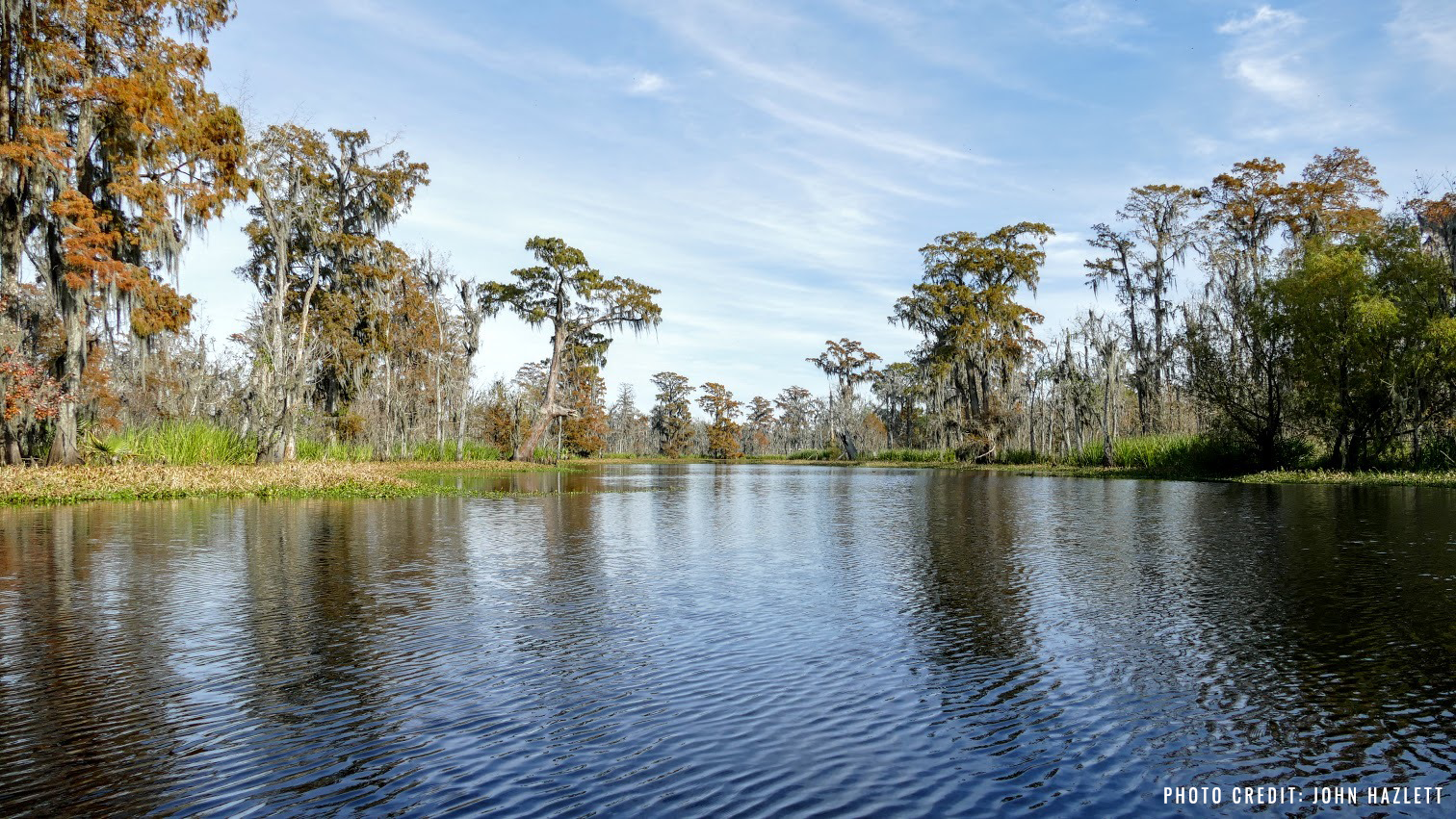Project to Restore Maurepas Swamp Takes One Important Step Forward
Army Corps releases plan selecting Maurepas restoration project as mitigation for nearby levee construction.
Overview of Maurepas Swamp
As one of the largest forested wetlands in the nation, Maurepas Swamp provides important ecological and socioeconomic benefits to southeast Louisiana. The swamp not only improves water quality and habitat for many species of conservation importance, but also increases resilience against storms for coastal communities from the Greater New Orleans region to the River Parishes and up into Greater Baton Rouge.
However, due to several stressors, the health of the swamp is rapidly declining. The construction of levees along the Mississippi River have isolated the area and cut these swamps off from much-needed fresh water, sediment, and nutrients they require to survive. Other factors such as historic alterations of the landscape, increasing salinities throughout the Pontchartrain Basin caused by the now closed Mississippi River Gulf Outlet (MRGO), and the destruction of new seedlings caused by the invasive nutria have all contributed to the decline of Maurepas Swamp.
Overview of River Reintroduction Into Maurepas Swamp project

This proposed diversion will be located on the East Bank of the Mississippi River near Angelina and Garyville in St. John the Baptist Parish.
The River Reintroduction into Maurepas Swamp Project (MSP) will reconnect the swamp with the Mississippi River, providing sediment and freshwater to existing wetlands, as well as helping to offset future increases in salinity. The fine grain sediment coming from the Mississippi may also help to build land which will allow the opportunity for trees, like bald cypresses and tupelos, to grow and thrive.
This widely supported diversion project will benefit more than 45,000 acres of wetlands and forests, nearly one third of the swamp, and reduce habitat loss over the next several decades. Creating this wetland buffer can also reduce storm surge for communities stretching from the Greater Baton Rouge to the Greater New Orleans regions.
Army Corps is moving this project forward
Currently, the U.S. Army Corps of Engineers (Corps) is evaluating mitigation measures to compensate for unavoidable wetland impacts resulting from construction of the West Shore Lake Pontchartrain (WSLP) Project. The WSLP will construct a risk reduction system extending from the Bonnet Carre spillway to Garyville that will reduce the risk from storm surge associated with tropical events. Part of the assessment process includes evaluating several alternatives to mitigate for environmental impacts – one of these alternatives being the Maurepas Swamp Project.
The Corps is considering the use of the Maurepas Swamp restoration project to mitigate for wetland loss caused by the construction of the WSLP levee, which is located next to the swamp. This is being done through a Supplement Environmental Impact Statement. The MSP is the environmentally-preferable mitigation option because it allows the impacts caused by WSLP to be mitigated in the same watershed.
If constructed together, the WSLP Project and MSP will provide significant storm surge protection that is collectively greater than if built separately, as well as cost savings. The integration of these two projects would demonstrate that combining risk reduction and restoration in complementary ways can achieve positive results for vulnerable communities and their surrounding ecosystems.

General layout of WSLP Project in relation to MSP features which will be within the River Reintroduction into Maurepas Swamp footprint. Source: USACE Mississippi Valley Division, New Orleans District
Support this important project during the public comment period.
The public comment period for this project opened on March 18, 2022, and will end on May 30, 2022. The Corps will host virtual public meetings, and the public can give comments via email to mvnenvironmental@usace.army.mil.
Learn more about this process here.
Resources
- What is Needed to Protect and Restore one of the Gulf Coast’s Largest Swamps?
- 114 community leaders ask the Corps to make a win-win decision for a threatened swamp
- Army Corps of Engineers Notice of Intent to Prepare Supplemental Environmental Impact Statement
- Amy Corps Presentation
- West Shore Lake Pontchartrain Project
